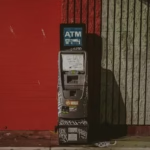How to Build and Maintain an Emergency Fund
Introduction:
An emergency fund is a cornerstone of personal finance. It acts as a safety net in times of financial uncertainty, whether you're facing a job loss, medical bills, or unexpected car repairs. Having an emergency fund can provide peace of mind and prevent you from going into debt when life throws you a curveball.
Why You Need an Emergency Fund:
Protection from unexpected expenses: Life is unpredictable. Medical emergencies, car repairs, or home maintenance costs can arise unexpectedly.
Avoiding debt: Without an emergency fund, you may be forced to rely on credit cards or loans, which can increase your financial burden.
How Much Should You Save in an Emergency Fund?
A common rule of thumb is to save three to six months' worth of living expenses. However, this can vary depending on your lifestyle, family situation, and job security.
For example, if your monthly expenses are $2,000, aim for a fund of $6,000 to $12,000.
Steps to Building Your Emergency Fund:
Set a Target Amount: Based on your monthly expenses, determine how much you want in your emergency fund.
Start Small: Even if you can only save $50 a month, start somewhere. The key is consistency.
Cut Back on Non-Essential Expenses: Temporarily reduce spending on dining out, entertainment, or subscriptions to build your emergency fund faster.
Use Windfalls Wisely: If you receive unexpected money, like a tax refund or bonus, consider putting a portion into your emergency fund.
Where to Keep Your Emergency Fund:
Choose a savings account that offers easy access, like a high-yield savings account or a money market account.
Avoid investing your emergency fund in stocks or other riskier assets, as you may need the funds in a hurry.
Maintaining Your Emergency Fund:
Replenish your fund after using it: If you need to dip into your emergency fund, work to replenish it as soon as possible.
Review your progress: Regularly check your emergency fund balance and ensure that it’s still in line with your financial needs.
Conclusion:
Building and maintaining an emergency fund is a crucial part of financial planning. With a solid emergency fund in place, you’ll be able to weather unexpected financial storms without resorting to credit cards or loans.

